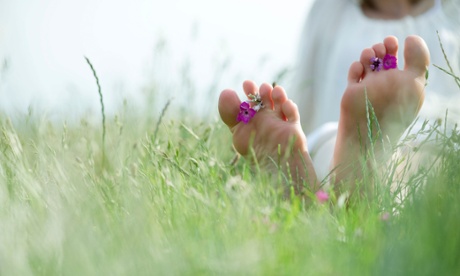
The summer holidays are supposed to be a time of relaxation for students: six long weeks off to see friends, catch up on hobbies and recharge the batteries before the start of a new school year.
But, for some, the pressure of schoolwork and exams is never far away; and GCSE and A-level results days, a source of anxiety for so many, fall in the middle of the vacation period.
So to make sure that students get to fully unwind over the break this week the Guardian Teacher Network offers some useful relaxation techniques. They can be used by parents and tutors to calm down anxious or hyperactive children over the summer, or employed by teachers to help students chill out when they make their way back into the classroom.
Get in touch with nature
You only have to listen to most meditation music – filled with the sounds of chirping birds and flowing water – to realise the value of the natural world when it comes to relaxation.
There is research to back this up: Michael Posner, emeritus professor of psychology at the University of Oregon who studies attention, says there is a link between communing with nature and lowering stress levels. He says that taking a stroll in the park “could do wonders” for reducing worries.
So, whatever the age of your child or student, plan time for a long walk. The National Trust recommends its favourite routes for the summer, including both easy and longer, more adventurous rambles. The website lets you search for the best paths near you, and also tells you whether the walk is hard or easy. Teachers could take this idea back to school, and plan a series of walking or trekking excursions with their class.
During any long walk hunger will strike, so enjoy a calming picnic beneath the trees. Treat children to some healthy snacks by trying out these seasonal recipes, including a refreshing summer berry slush and an avocado-filled chicken wrap.
What better way to break the ice between students at the start of the school year than with some alfresco dining? Get children to relax with a spot of mindful eating; a good way to start is with this guide on meditatively munching chocolate. If you want you can swap the sugary sweets for healthier options such as strawberries or ripe slices of mango.
Stimulate students’ minds
Another useful device in teachers and parents’ toolbox comes in the form of relaxing reading. Research from 2009 by consultancy Mindlab International at the University of Sussex found that reading worked well as a method of relaxation, easing tension in muscles and the heart.
This is a great excuse to pick up a good book. Parents could get their children listening to bedtime stories over the summer; this video about the sea child and an otter is a great story to start with.
Teachers can inspire younger and older children by encouraging them to get through as many books as possible on this list from Good Reads. It recommends books for children to read before they turn 18.
For younger students in particular, another useful way to regain focus is by playing some calming music. Get stocked up with meditative tracks that include natural sounds or slow repetitive movements. You can find plenty on YouTube or if you want to use a different form of audio try this Butterfly relaxation exercise from Calm for Kids.
It might also be worth trying some games to help children feel calm. One fun game involves Casanova the giraffe who just wants to give everyone a kiss. Or you could try jumping from balloon to balloon to earn points with Drifting Afternoon. If all that is too strenuous, get students to put together the pieces of a sleeping tiger puzzle.
Discover mindfulness and meditation
In the past few years, mindfulness, the art of staying present in the moment, has increasingly been used to help children to stay calm and focussed in the classroom. It’s also been used as a way of treating conditions such as anxiety, depression and attention deficit hyperactivity disorder (ADHD).
You can easily introduce it to children of all ages both at home and at school. For secondary and primary students, get them to try three calming poses – the diamond pose, mouse pole and do nothing doll.
For more ideas on introducing mindfulness, check out these one-minute mindfulness practices from MindSpace. They include 10 separate practices you can try out in the classroom.
You can also practice mindfulness and meditation with a spot of yoga. An easy guide to getting started is with these activity cards by Yoga 4 Classrooms. They can help centre students before a lesson. The cards cover six areas: breathing, loosening up, stretching, standing strong, feeling well and being mindful. They give clear instructions and all of the activities can be done while standing beside or sitting at desks.
It’s not just through meditation that you can get students feeling zen. Make sure your classroom offers a calming learning environment through a splash of colour. You can use this guide to tell you what colours are associated with relaxation. It may surprise you to know that blue has a sedative effect, and can actually cause the body to become cooler.
And finally, for more ideas on getting young minds relaxed and ready to learn read out how to guide on yoga and mindfulness.
Follow us on Twitter via @GuardianTeach. Join the Guardian Teacher Network for lesson resources, comment and job opportunities, direct to your inbox.

